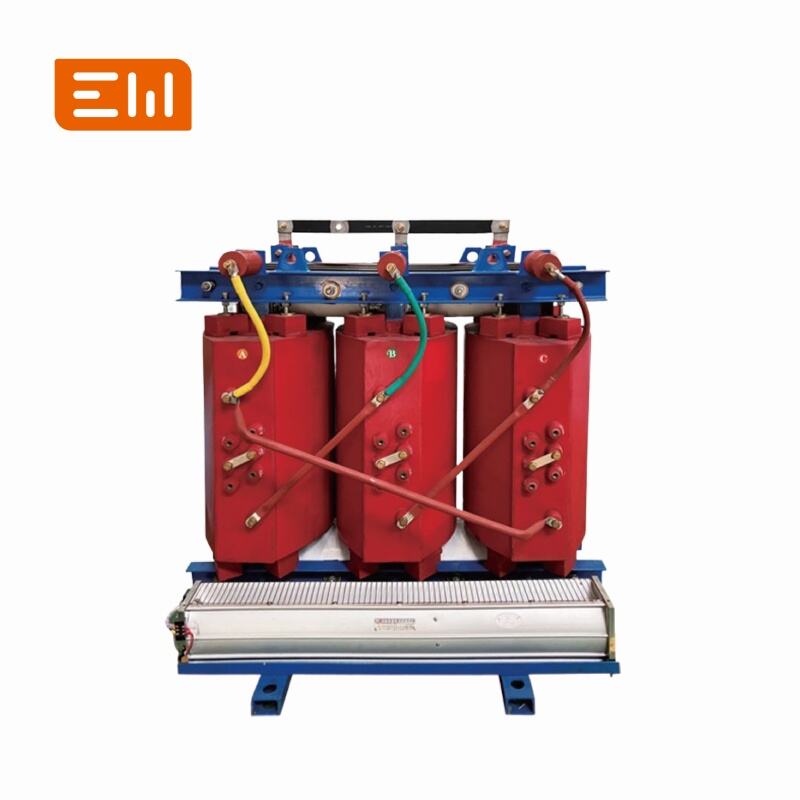Dry Type Transformer Cooling Methods Explained (AN vs. AF)
A transformer's ability to dissipate the heat it generates is fundamental to its performance and lifespan. For dry type transformers, which use air as their cooling medium, the method of circulation is a key specification. The two standard cooling classifications you will encounter are AN (Air Natural) and AF (Air Forced).
Understanding the difference between these two methods is essential for correctly sizing a transformer and ensuring it can handle your facility's load profile, especially during peak times. For more information on where this fits in the overall specs, see our complete guide to specifications.
AN - Air Natural Cooling
AN (Air Natural), sometimes referred to as AA (Air to Air), is the baseline cooling method for all dry type transformers. It relies entirely on the natural process of convection.
How it Works:
- The transformer's core and windings generate heat during operation.
- This heat warms the surrounding air.
- As the air becomes warmer, it gets lighter and rises.
- This upward movement draws cooler, denser air in through the bottom vents of the transformer enclosure.
- This continuous, natural circulation of air carries heat away from the windings and dissipates it into the surrounding environment.

The AN rating is the transformer's base kVA capacity—the amount of power it can deliver continuously without any assistance from fans.
Advantages of AN Cooling:
- Silent Operation: With no moving parts, it is completely silent.
- Energy Efficient: It consumes no extra energy.
- High Reliability: There are no fans or mechanical parts that can fail.
AF - Air Forced Cooling
AF (Air Forced), sometimes called AFA (Air Forced to Air), is an enhancement to the natural cooling process. It involves using a set of fans to significantly increase the volume and velocity of air moving across the windings.
How it Works:
- The transformer operates under its AN rating for normal loads.
- A temperature monitoring system constantly measures the winding temperature.
- If the temperature exceeds a pre-set limit (indicating a heavy overload or high ambient temperature), the controller automatically activates the cooling fans.
- These fans, typically mounted at the base or side of the enclosure, blow a high volume of air directly through the winding cooling ducts.
- This forced airflow removes heat much more effectively than natural convection, quickly cooling the windings.

The AF rating is the transformer's higher, fan-assisted kVA capacity. This rating is typically 25% to 50% higher than the base AN rating.
The AN/AF Dual Rating
Most transformers equipped with fans will have a dual kVA rating, for example: 1000/1333 kVA.
- 1000 kVA is the continuous rating with natural air cooling (AN).
- 1333 kVA is the higher, short-term rating achievable when the cooling fans are active (AF). This represents a 33% increase in capacity.
This dual rating provides tremendous operational flexibility. You can size the transformer's base AN rating for your normal, everyday loads and rely on the AF rating to handle predictable peak loads, seasonal demands (like summer HVAC loads), or to provide a buffer for future growth without having to buy a much larger transformer.
Conclusion: Smart Sizing for Efficiency and Capacity
Understanding AN and AF cooling methods allows for smarter, more cost-effective transformer selection. Instead of buying a transformer oversized for your average needs just to handle occasional peaks, you can select a unit with an AN/AF rating.
This strategy ensures the transformer runs silently and at its most efficient point for most of its life, with the built-in capability to deliver extra power precisely when you need it. It is a flexible and economical approach to modern power management.
All https://www.enweielectric.com/products/transformers/dry-type-transformers">Enwei Electric dry type transformers can be configured with or without forced-air cooling fans to meet your specific load profile. https://www.enweielectric.com/contact-us">Contact us to determine the best cooling configuration for your project.

